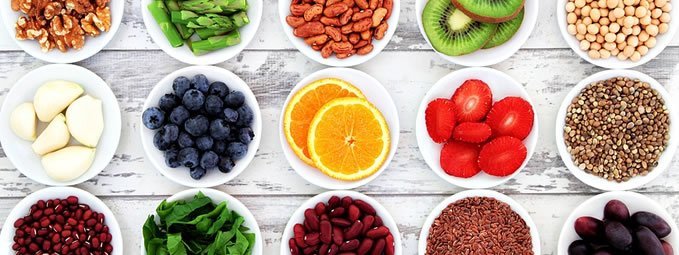In case you have never heard of ORAC, don’t worry this is your chance to know more about this particular feature found in food and that can be extremely valuable for your health.
What is an ORAC Value?
Nowadays consumption of food should not merely be by choice or preference, other factors should begin to influence your food choices. One of which is the Antioxidant content of such food. It is well known that antioxidants play a major role in many body functions including protecting the skin and subsequently slowing down the effect of aging, acting as a support for the immune system, protects the body from heart diseases and so much more. Having this in mind, the National Institute on Aging (NIA) at the National Institutes of Health (NIH) developed a unit which can be used to measure the Total Antioxidant Content (TAC) in food. This will help in guiding your day to day choices of food.
ORAC which stands for Oxygen Radical Absorbance Capacity, is a laboratory-based test that is done to measure the antioxidant units in a particular food. The benefits of antioxidants in our body cannot be overemphasized, therefore, knowing the ORAC unit of a food helps to shape your food preferences.
What Foods Contain a High ORAC Value?
As always when it comes to high antioxidant units for fruits and vegetables, bright colored fruits and vegetables will always take the lead. This is because they contain a high level of antioxidants known as Lutein and Zeaxanthin. Other Fruits that measure high on the ORAC scale includes:
- Pomegranate: Pomegranates is a beautiful and extremely healthy fruit with a thick red fibrous skin with shiny seed embedded in them. They have as much as 10,500 ORAC units per 100g servings.
- Acai Berry: These are dark purple grape-like fruits that grow in clusters and originate from the Amazon rainforest. These fruits are healthy for you as they are rich in antioxidant. The Acai Berry has 102,700 ORAC unit per every 100 grams serving.
- Maqui Berry: Originally found in the Chile, the Aristotelia chilensis also known as Maqui Berry is a bright colored purple berry that can be consumed in fresh or juice form. The Maqui Berry has 19,850 per 100 mg serving ORAC unit.
- Acerola Cherry: These are bright red cherries found mostly in warm climates. They can be used for syrups, jam and juices. It is rich in antioxidant as it has been measured to have 20,000 ORAC units for every ounce of juice.
- Camu Camu: This is a small fruit that has a mixture of red and orange colors. This fruit can be found only in the Amazon rainforests of Peru and Brazil. Highly rich in antioxidant, this cherry-like fruit has 52,000 micromole TE/ 100g ORAC unit.
- Mangosteen: The mangosteen is a dark purple fruit with thick skin which originated from the rainforest of North America, but can also be found in the Asian countries of Indonesia, Malaysia and Philippines. The Mangosteen juice has a very high antioxidant property with an ORAC unit of 17,000 unit per 100 grams serving.
It is important to note that most of the fruits and vegetables that have high ORAC units originated and are grown in Amazon rainforest region of South America. This even increases their capacity to mop up free radicals in the body because the soil there contains a natural organic substance called Fulvic acid. Since Fulvic acid contains a variety of hormones, vitamins, flavonoids, ketones and other minerals; these compounds are naturally absorbed by fruits planted in the Fulvic acid rich soils found in the Amazon rainforest.
Conclusion
As much as you want to consume fruits, vegetables and other foods that have high ORAC units, it is important to keep in mind that organic foods, fruits and vegetables grown directly in the soil is always the best option. This is because they don't only have high antioxidant values, but they can also protect the body from a whole lot of diseases and illnesses. So what are you waiting for? Start your healthy journey today and benefit from our wide variety of products rich in ORAC value and that are made solely from the most delicious and natural products. Take a step forward and change your food habits by replacing them with a healthy everyday diet!

